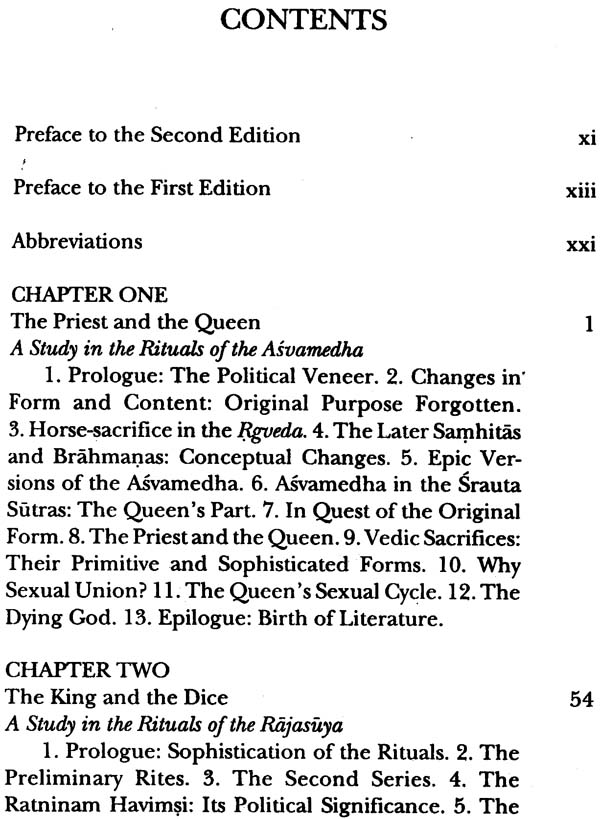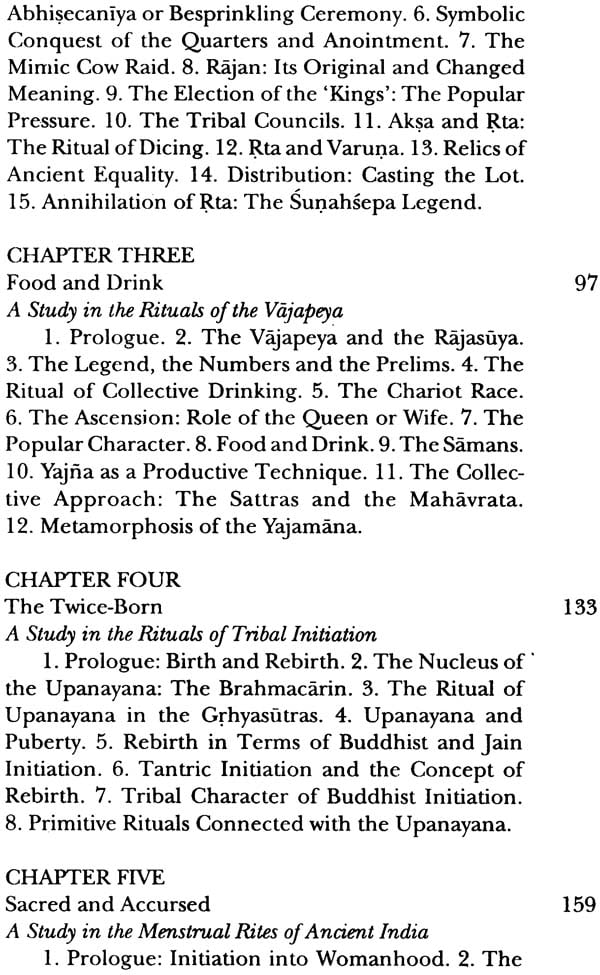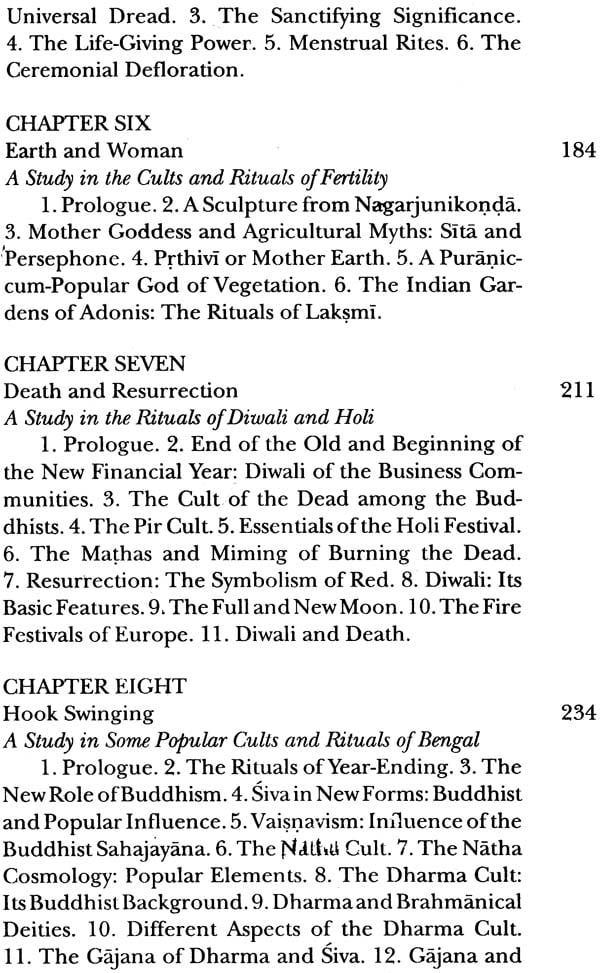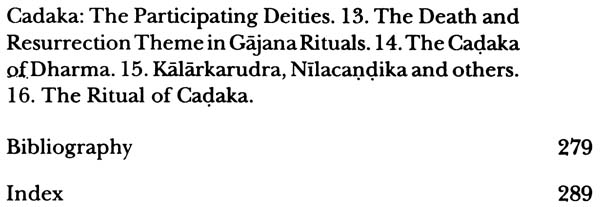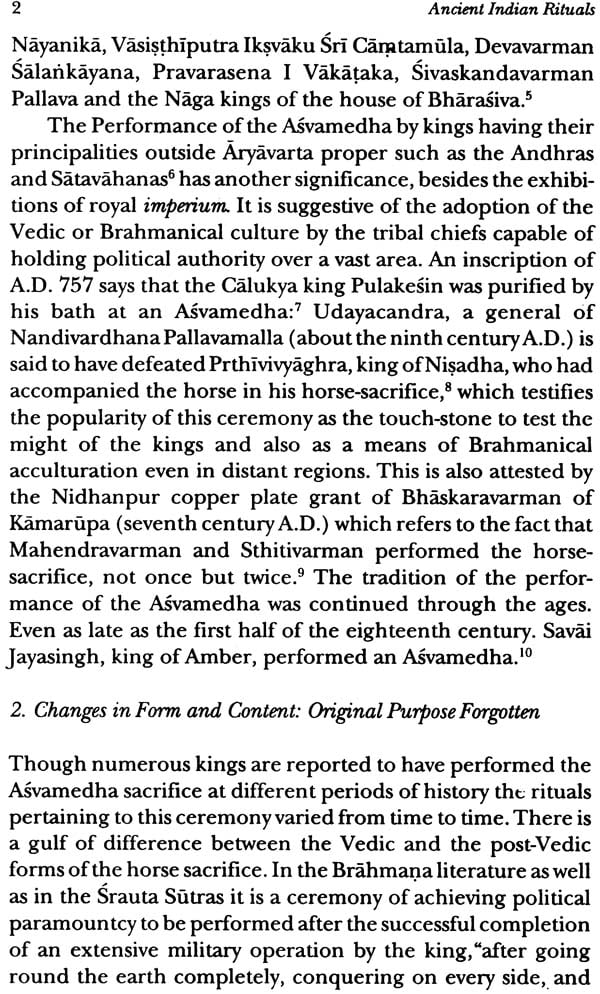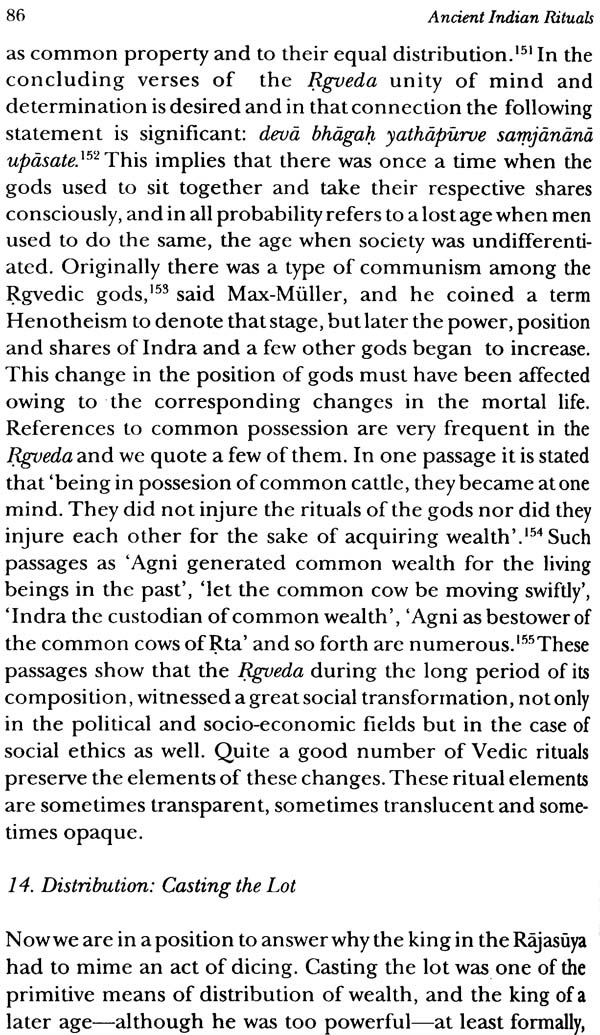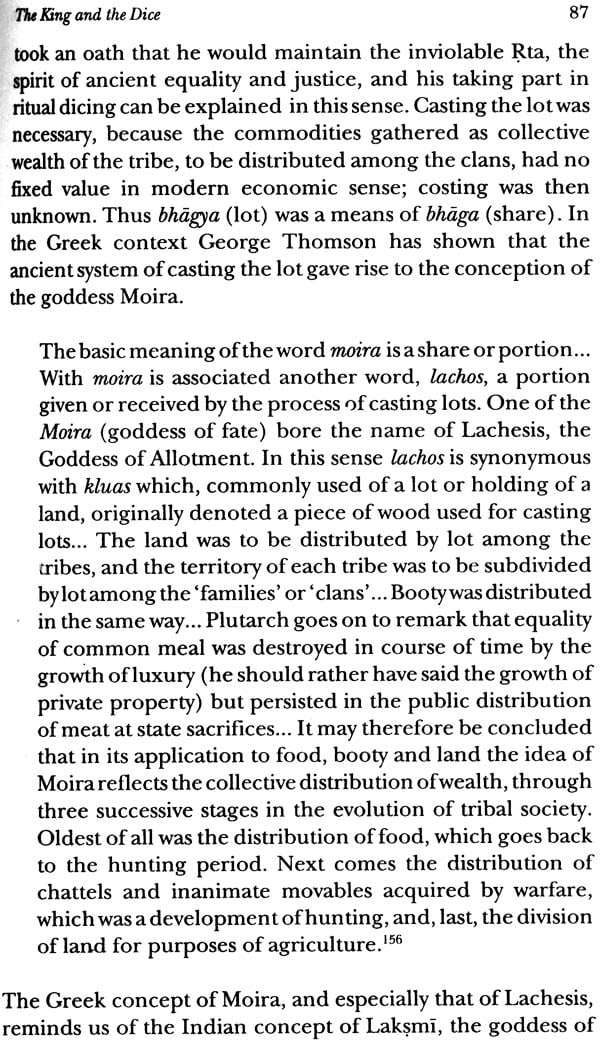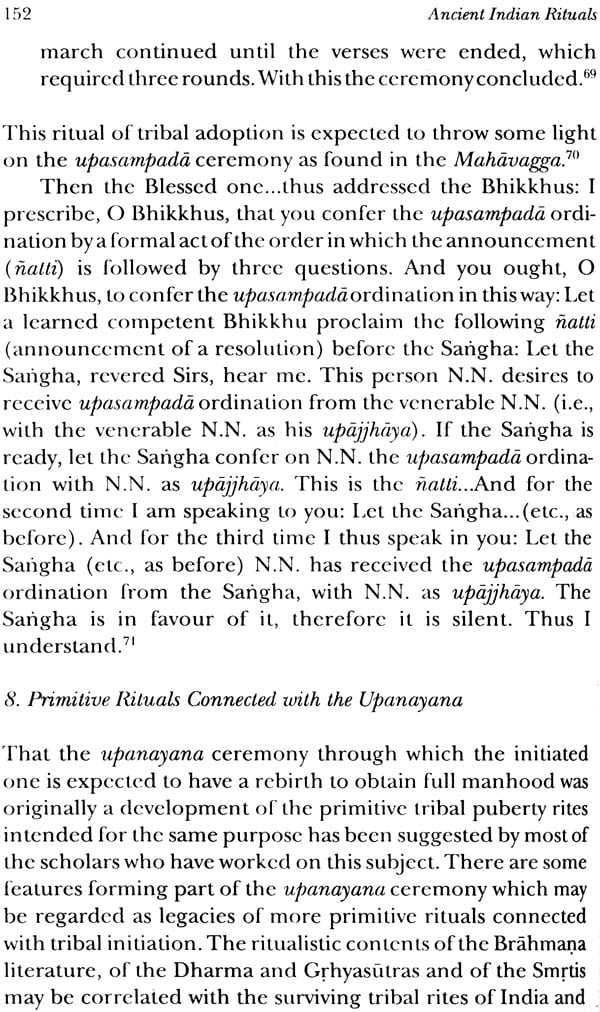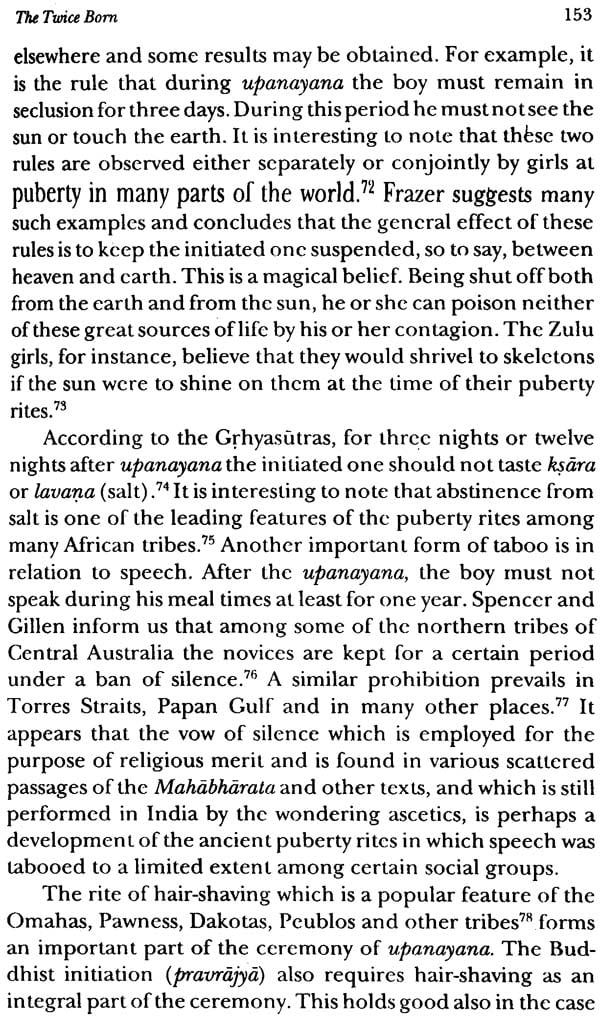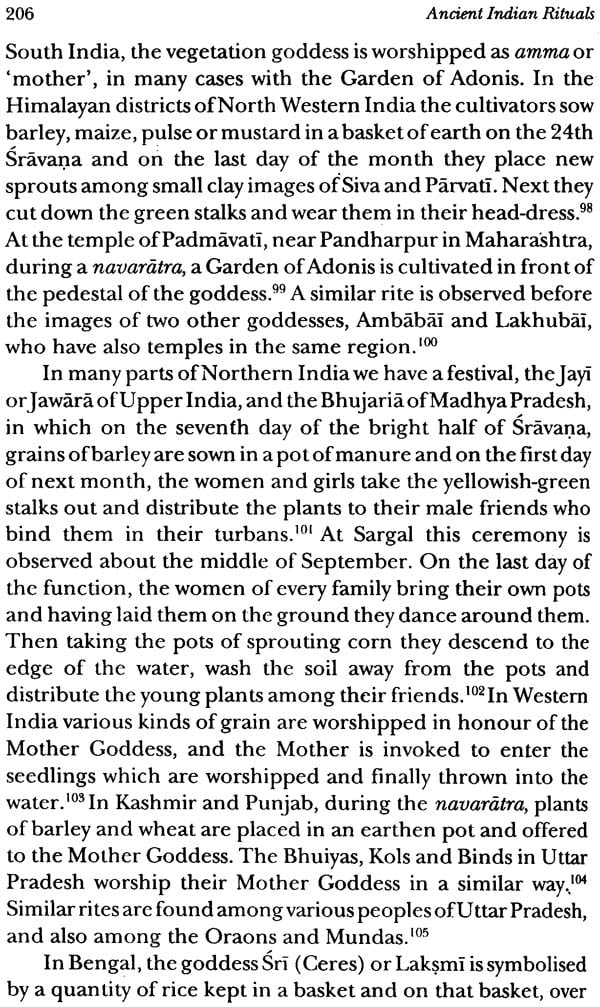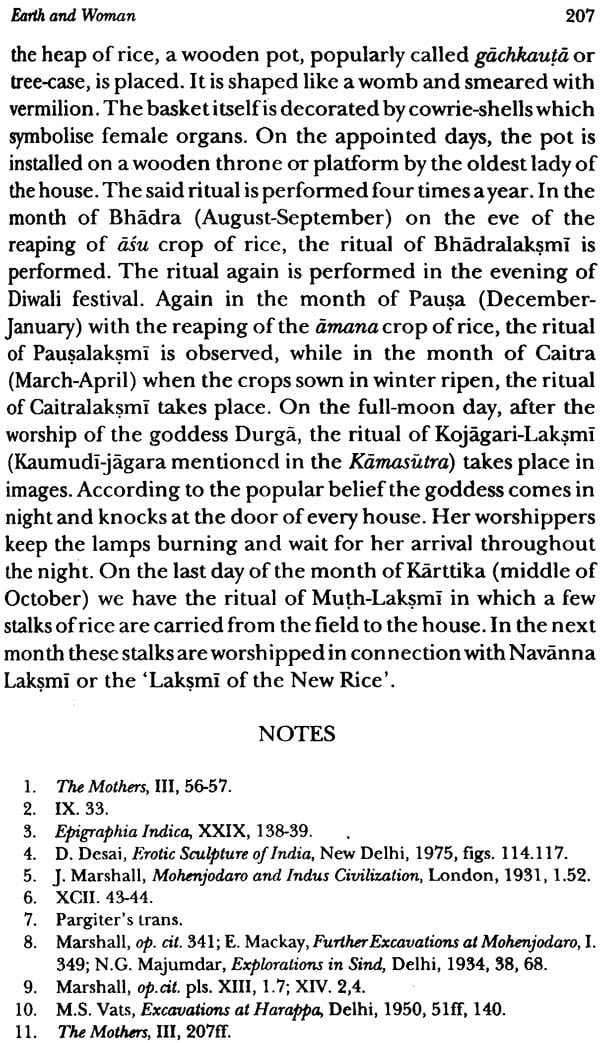
Ancient Indian Rituals and Their Social Contents
Book Specification
| Item Code: | NAQ816 |
| Author: | N. N. Bhattacharyya |
| Publisher: | Manohar Publishers and Distributors |
| Language: | English |
| Edition: | 2005 |
| ISBN: | 9788173046025 |
| Pages: | 328 |
| Cover: | PAPERBACK |
| Other Details | 8.50 X 5.50 inch |
| Weight | 400 gm |
Book Description
The beliefs and ideals of different civilizations are often formulated in their rituals more explicitly than in any other cultural trait, and this gives to the study of ritualism a deeper historical significance. That is why the study of rituals should not only be restricted to that of classifying their contents, with a view to making out their distribution in geography and history, but the motives as well , by which they are characterised, are to be detected, and this is expected to reveal the actual social set-up in which they were evolved originally. Such studies in the case of Greek rituals have yielded tangible results, but so far as the Indian conditions are concerned, the scope is indeed very limited owing to the fragmentary and fabricated nature of the evidence, one has to handle. The ritualistic contents of the ancient and medieval religious texts are so much saturated with the elements of mechanical sacerdotalism of the priestly class that in many cases it often becomes absolutely impossible to derive any significance or meaning from a given set of data. It is due to the fact that the rites of the simplest level of life were transformed later into the esoteric art of the ruling or privileged class, surviving as a part of religion in their changed and distorted forms. The 'illusory technique complementary to the deficiencies of the real technique', by which the significance of a rite is to be understood in the background of pre -class societies, yielded quite an opposite result in class societies. The primitive notion that by creating illusion you can control the reality, you actually control it, which is the basis of all rites, came to convey at a later period a different meaning: illusion not to control reality, but to evade it.
The first three chapters of this book deal, strictly on the basis of the analysis of rituals, with the entire history of a stupendous socio-political transformation, showing the process leading to detribalisation and growth of state power, the transition from pre-class to class society. The analysis of the three principal rituals of royal inauguration, as we have them in their fabricated forms, clearly exhibits how with the social changes caused by the production of surplus and the accumulation of wealth in the hands of a few by raids and wars, the ancient democratic institutions were destroyed, how the tribal chiefs, the pastoral warlords, came to acquire, step by step more and more power which led to the institution of kingship and its aggressive imposition upon the masses who were unwilling to accept it owing to their strict adherence to the democratic values and how this rise of state power on the ruins of tribal equality symbolised by the annihilation of Rta, ruthlessly exterminated the traditional social relations and introduced a qualitative change in the course of historical development. While dealing with this socio-political transformation, which appears to have taken place in different parts of India roughly between the eighth and the sixth centuries B.C., I have vigorously asserted, probably against the views of all eminent Indologists, that the institution of kingship, in the modern sense of the term, was absolutely unknown in the age of the Rgveda. The word raja which has misled even the serious and critical scholars, originally meant nothing but tribal heads who used to meet together in open assemblies and settle the affairs of the tribes and clans by mutual discussions in a perfectly democratic way. The truth of this formulation was felt by eminent Vedic scholars like Keith or Macdonell, but they could not express it in the right way owing to the influence of the ideas and values of their contemporary society. The vision of the historians, despite their professed objectivity, is often circumscribed by the dominant class outlook, both of their own age and the age they study.
In this work I have argued that the precise nature of the social institutions of the ancient Indians is a question which the internal evidence is in itself too fragmentary to solve, and hence the internal evidence should be studied in the light of what is known of the surviving tribal institutions in general. For example, the role of the tribal chiefs (rajas) in Rgvedic democracy, as suggested on the basis of textual evidence, (see ch.II), to which reference has been made above, can only be understood in its real historical perspective if we take into account the facts of contemporary tribal life. Till recently, the most remarkable feature about the tribal life of the north-eastern hill area was the fundamentally democratic basis of their social and administrative organisations. 'With minor exceptions the land belongs to the community and not to any individual. Although in the Garo Hills the Nokma (the head of a clan or a village), in the Khasi and Jaintia Hills the Siem or the Doloi or the Raja, and in the Lushai Hills, till recently, the Chief was the nominal proprietor of all lands within his jurisdiction, every villager could cultivate his plot of land anywhere as a matter of right. In society there is no distinction between high and low. Wealth and income do not confer social privileges. The once powerful Lushai Chief and the Khasi Siem who were regarded by the neighbouring peoples as Raja or King were as much commoners as the humblest of the humble.... This democratic spirit was strongly reflected in the indigenous tribal administrative organisations. The Khasi Siems were constitutional monarchs. They could hardly ever make any decision independently.... Disputes are heard in open courts where all the male members of the village take part. In some areas even the women are allowed to be present at the trial of cases. The judgement passed on an offender is regarded as judgement of the whole village and not merely of the Chief and his advisers. This system of administration suited the genius of the people and they were happy Under it. The British, with their experience of administration over half the world, were wise enough not to interfere with the indigenous administrative machineries" (S.Barkataki, Tribes of Assam, New Delhi 1969, pp.12-13).
Where textual evidence is fragmentary and not self-explanatory, such facts of the surviving tribal life are essential to make things transparent. They are conspicuously present in the Grand Sacrifices, and their very presence helps us to distinguish between the original and fabricated forms of these ceremonials. Accordingly, it has been shown how the simple agricultural rites, originally based upon the primitive conception of the identity of earth and woman, became step by step class oriented, how their original kernel was gradually thrown aside leading to the development of the accretions which ultimately came to take the lead and how the primitive productive techniques, by which the agricultural rites were characterised originally, having assumed sophisticated tone and colour, became decorative features of royal ceremonies. The growth of these accretions has also been studied as a result of which we have been able to make a distinction between the original and sophisticated forms of the Vedic sacrifices or Yajnas, their genesis in primitive magical beliefs and practices, their getting ensnared by the logic of pure illusion required for justifying the existence of class society, and their final culmination into a meaningless but profitable affair of the priests, kept shrouded in deep mystery and jealously guarded.
**Contents and Sample Pages**
